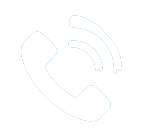
CALL US
(800) 348-9250

EMAIL US AT
support@pcbunlimited.com
Put simply, electronic devices are useless without a printed circuit board (PCB), which are the key foundational building blocks. PCBs come in all shapes and sizes, ranging from simple, single-layer boards used in garage door openers to the six-layer boards used in smartwatches—all the way up to complex high-speed and high-density 60-layer boards used in servers and supercomputers. Printed circuit boards provide the foundational basis on which we assemble all other electronics. So, this begs the question, what is a printed circuit board?
Plain and simply put, printed circuit boards allow for parts of any electronic component to “talk” to one another. Components such as semiconductors, connectors, resistors, diodes, capacitors, and radio devices are all mounted to a PBC and soldered onto the board. Once all these pieces are soldered to the PCB, these components connect all of the electric components and create a method of communication.
Printed circuit boards require a decent amount of upfront work ranging from designing and laying out the circuitry properly. Professionals can perform this step with the use of electronic computer-aided design programs. Once the layout and design are finalized, you can move onto the manufacturing and assembling process. This process can be fully automated, and mass-producing PCBs is cheaper and faster than with other wiring methods, as components are mounted and wired in one operation. You can fabricate a large number of printed circuit boards at the same time, and the layout only has to be done once. Many companies can also assist in manually making smaller quantities of PCBs at a client’s request.
PCB Unlimited specializes in small- and large-scale PCB fabrication and manufacturing within the United States. Since 2008, we have provided designers and engineers with a convenient web-based way to order printed circuit board prototypes and access our superior PCB fabrication services. We ensure top-quality service and walk clients through the whole PCB process from the initial design stage all the way through sending off the final prototype. Contact us today to learn more about our services and the PCB Unlimited difference.